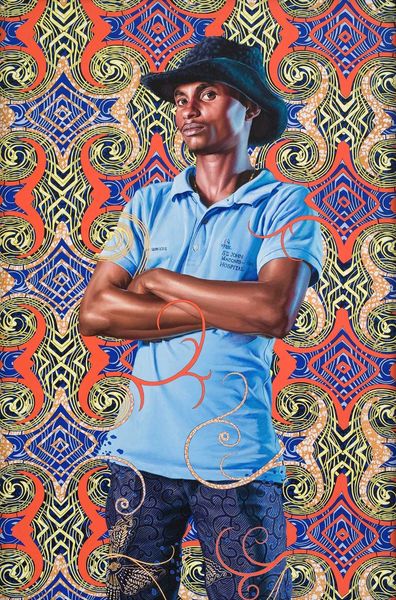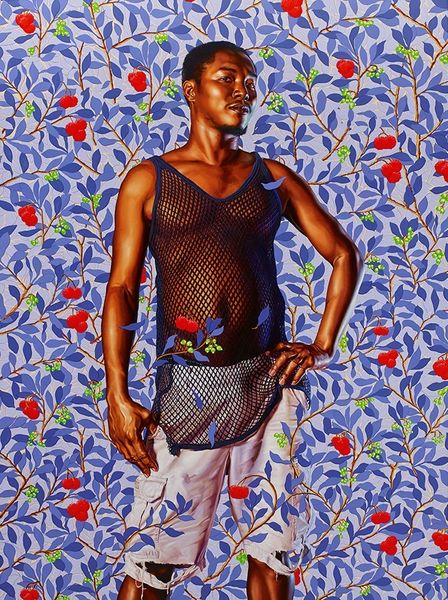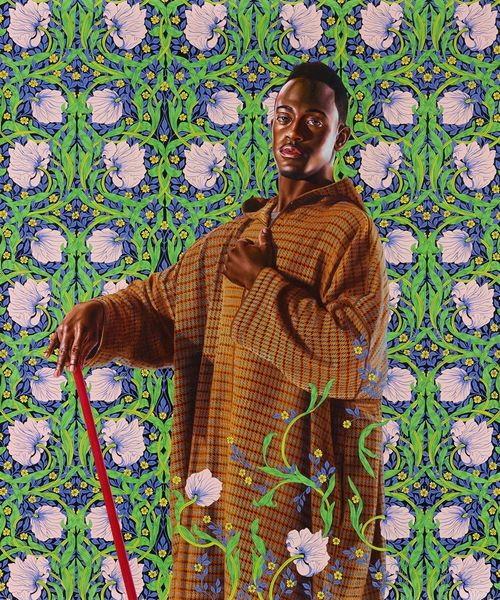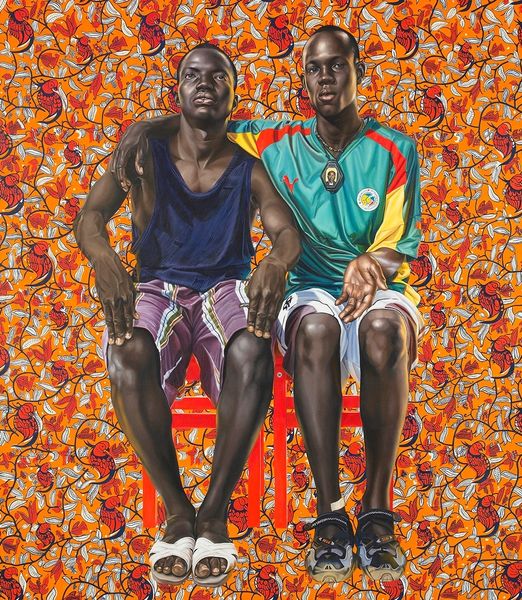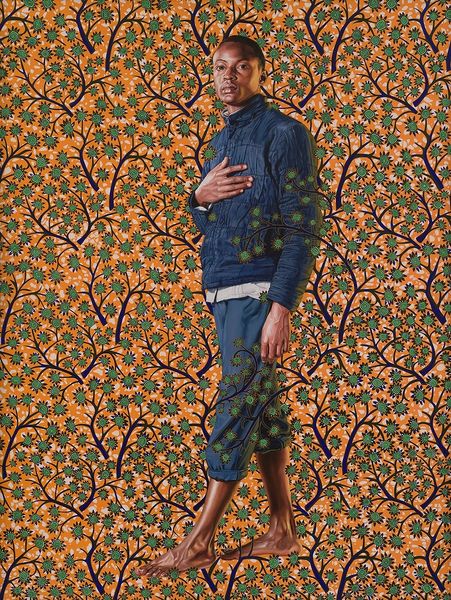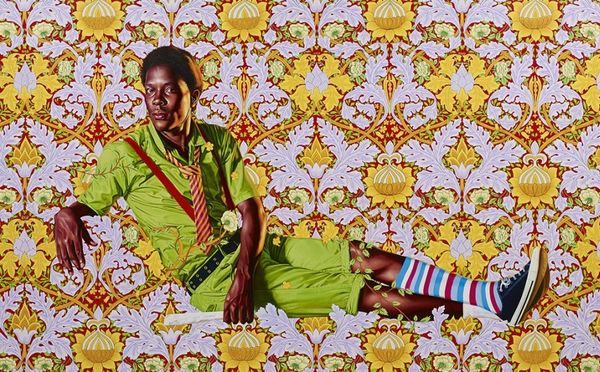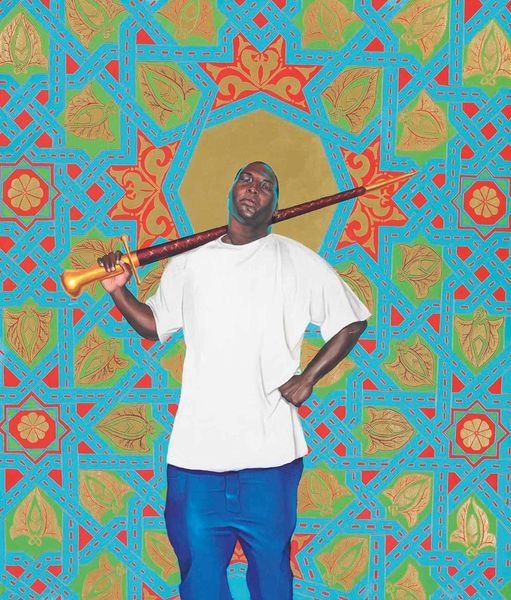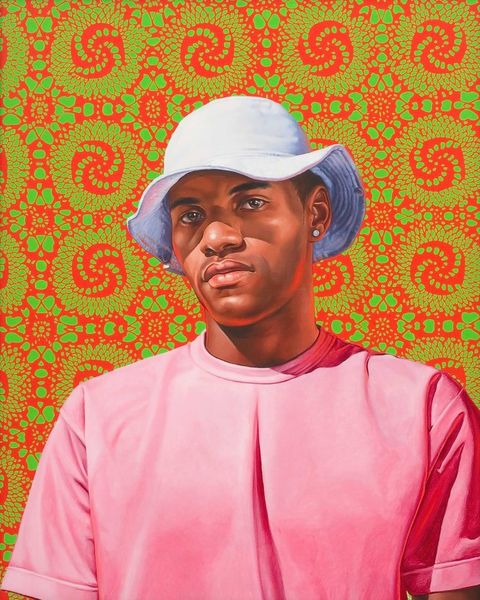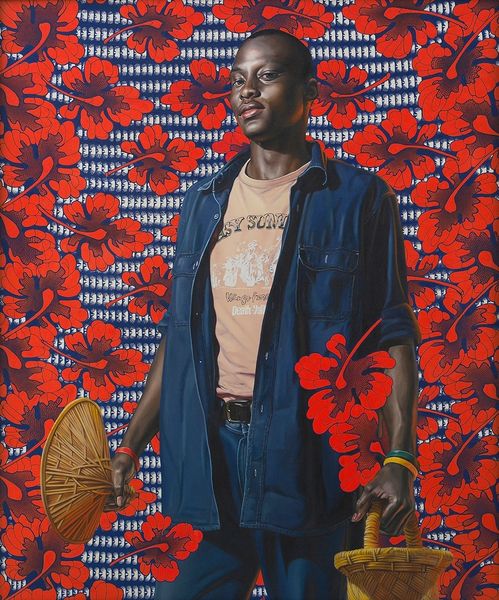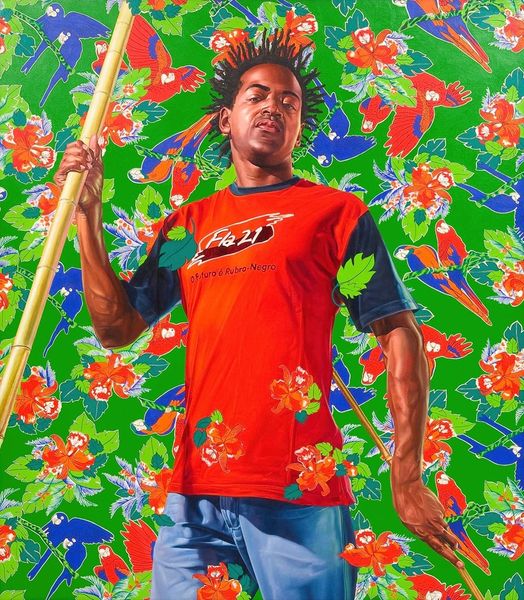
painting
#
portrait
#
pattern-and-decoration
#
contemporary
#
painting
#
pop art
#
figuration
Copyright: Modern Artists: Artvee
Editor: So, this is Kehinde Wiley's "John Churchill Duke of Marlborough" from 2012, it’s an acrylic on canvas. What I find striking is how Wiley combines a classic portrait style with that vibrant, almost overwhelming, patterned background. What do you see in this piece? Curator: Wiley, in this dazzling remix of art history, uses portraiture as a powerful tool to disrupt conventional power structures. The "Duke of Marlborough" initially evokes a tradition of European aristocratic portraiture. However, by placing a contemporary Black man at the center and surrounding him with an African wax print pattern, Wiley reclaims and redefines notions of power and representation. Editor: So it's about challenging who gets to be seen, who is worthy of being memorialized in this grand, historical style? Curator: Precisely. He's questioning the historical absence and marginalization of Black figures within Western art. Furthermore, think about the symbolism inherent in the African fabric—it speaks to identity, diaspora, and the complexities of cultural hybridity. It encourages viewers to confront the racial and social politics embedded within art history. Editor: I see the wax print pattern sort of enveloping him, as if asserting his presence in this space. It really makes you rethink those old portraits in museums. Curator: Absolutely, Wiley invites us to consider how identity, race, and power intersect and how art can serve as a vehicle for social commentary. The work prompts questions of visibility, agency, and historical narrative, doesn't it? Editor: Definitely! I never thought about portraiture as such a loaded genre before. Thanks for making me look at it with new eyes! Curator: My pleasure. It's in these dialogues that art reveals its power to challenge and transform our understanding of the world.
Comments
No comments
Be the first to comment and join the conversation on the ultimate creative platform.
